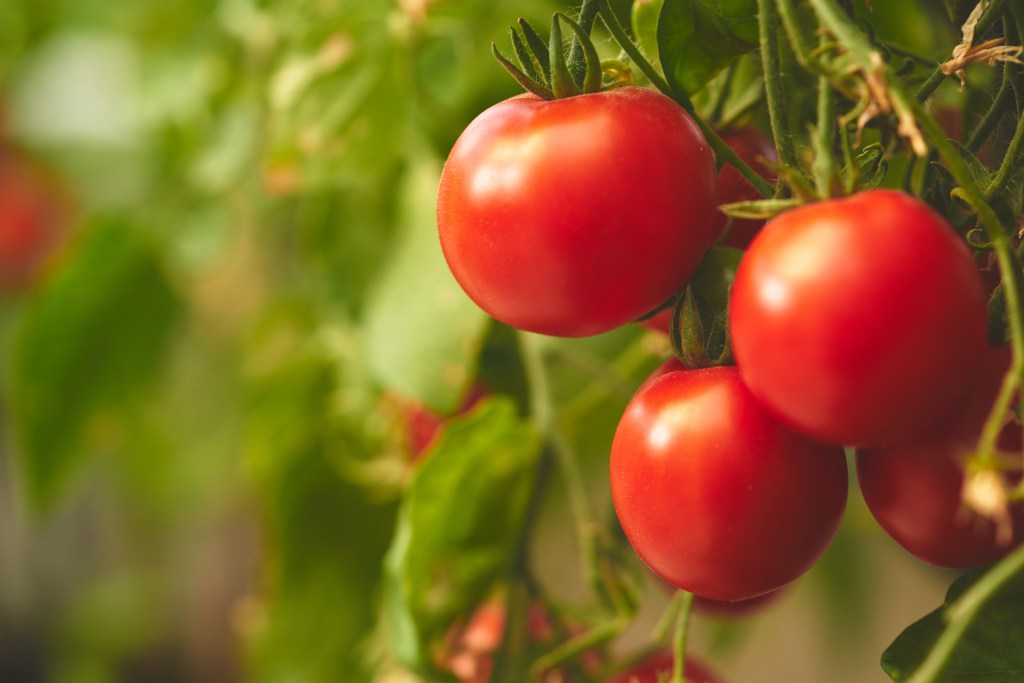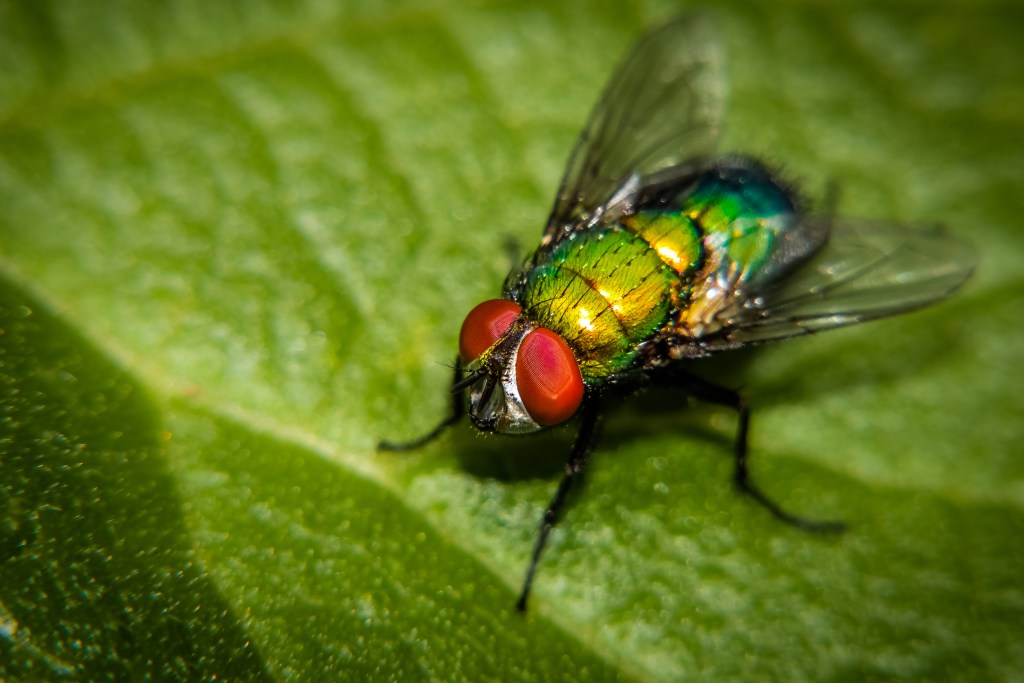Wearing a “Save the Flies” t-shirt may warrant some stares.
However, many etymologists now consider flies the second most important pollinator after bees. In 2020, the Annual Review of Etymology published Romina Rader’s analysis, which revealed flies visited 72% of the observed crops in the study, meaning flies are active and adept pollinators. Backed by a diverse array of ants, spiders, beetles, moths, and wasps, flies and other non-bee pollinators frequent numerous flowering plants to aid in pollination.
It’s no wonder why saving the bees presents an urgent call-to-action, though. Research in 2020 found an alarming 50% decline in bumblebee populations. Etymologists at the University of Illinois called on help from people across the state to document and uncover this disaster firsthand. BeeSpotter, a web-based portal developed by May Berenbaum within the University of Illinois, partners community members with university etymologists to track bees across the state. Berenbaum, the Head of Etymology at the University of Illinois, also contributes to the iPollinate program, another program within the university that tracks pollinators.
Bees, butterflies, and other pollinators suffer population declines due to habitat loss, climate change, and the threat of invasive species. This poses unnerving challenges for our future, as we rely on pollinators for one out of three bites of food we eat every day.

Kelly Allsup, a University of Illinois extension educator serving three counties, teaches others within the Master Gardener and the Master Naturalist Program about integrated pest management. Working as a liaison between the university and citizen scientists, she also contributes to the iPollinate and BeeSpotter programs.
Before working as a horticulture educator, she worked in the greenhouse industry after graduate school, where she became passionate about beneficial insects, pollinators, and the dangers of invasive species.
“I think a lot of people don’t realize who the major pollinators are in Illinois,” Allsup says. “You see the honeybees and the monarchs and these are really the poster child[ren] of the pollinators, but what we don’t realize is that there’s flies, wasps, and beetles that also pollinate… We kind of put these pollinators on a pedestal based on how they look, but really it may be the tiny little green bee in your backyard that’s really the pollinator that’s working the hardest, or that big, scary wasp that you don’t want in your backyard because you think it’s going to sting you.”
Depending on the climate of their location, 75 to 94% of flowering plants rely on bees, butterflies, flies, moths, and other pollinators for pollination and reproduction. In other terms, pollinators account for nearly 217 billion dollars in the global economy for food and products reliant on their crucial labor.
Since pollinators contribute to the survival of our species, humans must actively protect all pollinators—not just those with colorful wings or lovable reputations.
“There’s a lot of things that you can actually do for pollinators, even if you don’t garden,” Allsup says. “So, for instance, don’t use a bug zapper. I mean, everybody thinks that when they use a bug zapper they’re getting mosquitos, the research shows that less than 0.02% are actually mosquitos. All the rest are beneficial insects, like moths that pollinate at night or beetles.”
Instead, Allsup recommends standing in front of a fan when outdoors at night. Mosquitos have very weak wings, meaning they can’t compete with the strength of a fan. Remember: mosquitos help pollinate, too. LED lightbulbs also help protect pollinators by attracting fewer to the source of light. Fluorescent and incandescent light bulbs confuse and even kill night flying pollinators.
To make a significant change, it’s not enough to avoid killing; we must actively support pollinators by providing food and shelter for them the way they do for us.
“First of all, you can have a garden,” Allsup says. “I mean, the number one thing is habitat reduction. We don’t have as many flowering plants flowering around the state that we used to.”
Gardeners play a crucial role in supporting pollinators by researching the plants they choose. Ornamental landscape invasive species can be easily bought at garden centers and soon devastate their environments. Buckthorn, a common hedge in Chicago landscaping, accounts for about 36% of the total trees found in the city of Chicago and seven surrounding suburbs. Originally from Europe, Buckthorn spreads quickly and outcompetes plants native to this continent for space, nutrients, and water due to its long growing season. The leaves and berries of buckthorn also prove dangerous to wildlife when consumed or left to decay and pollute water sources.
“So what does an invasive species do? It takes over whatever natural areas we have left and it decreases the natural biodiversity of that area,” Allsup says. “Again, we’re already running out of habitat, and now we’re degrading our habitat with invasive species.”
Invasive plants contribute to declines of native pollinators by outcompeting native plants these pollinators rely on for survival. Don’t plant invasive plants and dispose of any invasive plants already growing in your yard.
While rethinking which plants to buy, gardeners should also rethink the methods they have been taught to garden.
“The way we have been taught to garden is exactly the opposite of how we should if we’re promoting pollinators,” Allsup says. Don’t spray pesticides in your garden, she says, because pesticides can have disastrous results on insects and other animals. “People think, ‘If I’m spraying an herbicide, or I’m spraying a fungicide, then I’m not going to hurt the insects.’ The thing that makes them such fabulous pollinators is all the little hairs all over their bodies; [those hairs] actually make them so much more susceptible to pesticides.”
If unavoidable, use pesticides as a last resort; Allsup recommends spraying at night to avoid harming the many pollinators that roam during the day. Another misconception, Allsup says, is that gardeners must thoroughly clean their gardens between seasons to remove all debris.
“We’re always taught if you want to get rid of insects or diseases, you clean your gardens… Now the school of thought is completely opposite,” Alssup says. “If you don’t have debris laying around, you’re not going to have overwintering pupas, overwintering adults, overwintering queen bumble bees that are overwintering in the ground… If you clean landscape up and you don’t leave the leaves behind and you don’t leave stems behind, there’s nothing for them to overwinter in.”
Instead, allow insects and other animals to use your soil to brave the winter within.

Allsup also recommends lessening your dependence on mulch, because it prevents pollinators from being able to lay eggs or nest in the dirt beneath plants. While great for moisture retention, mulch contributes to population declines by preventing pollinating insects from reaching adulthood.
To prevent the overgrowth of weeds, plant plants closer together and use a stirrup hoe in the beginning and middle of the season. By placing plants closer together, they knit together to stop the sunlight from hitting the soil and promoting weed growth, but still provide ample room for insects to burrow into the soil beneath.
Climate change threatens the survival of pollinators by adding a layer of uncertainty to the habitats, climates, and food sources pollinators rely on. To save pollinators, put pressure on elected officials to enforce the largest contributors of greenhouse gases to curb their emissions. Leading contributors, including corporate and military bodies, generate greenhouse gases through high electricity and heat production, transportation needs, human land development, and waste production.
Climate change threatens the future of all pollinators, and the rapid effects on bee and butterfly populations prove detrimental. With these declines, humans need to embrace more active solutions. If human impact is destroying their habitats, humans have an obligation to protect survivors and rebuild populations, which starts with individual behaviors at home.
“What’s happening is we have created a landscape that can’t support pollinators at all,” Allsup says. “Let me give you an example. We tell you that oak trees are really important, because trees support like 500 species of Lepidoptera.”
Lepidoptera, or butterflies and moths, lay eggs in trees where the growing caterpillars can feed and grow. The small larvae feed until it is time to pupate, or enter the transition stage sometimes accompanied by a cocoon of silk.
“Well, [the caterpillar] falls to the ground when it pupates,” Allsup says. “And what do we do underneath that tree? We mow. So we’re creating an ecological trap.”
Lawn maintenance can be a touchy subject for homeowners; however, regularly mowing the lawn can kill these pupae before they reach adulthood. Harsh chemical fertilizers necessary for lawn maintenance can harm animals and their water sources as well.
Still, Allsup receives many calls through the Master Gardener Help Desk from gardeners asking how to kill pests on their plants before they’ve even identified the species. Teaching people to help, not kill, insects requires a serious mindset change. Familiarity offers a bridge for improving the relationship between humans and creatures they find bothersome or even downright scary.
“Why am I not afraid? Because I’m knowledgable,” Allsup says. “I look at an insect and I know instantly what mouth parts it has and what it eats. I know what it’s going to do to me, so I’m not afraid. So I just think it’s the unknown.”
After introducing her own two-and-a-half-year-old son to a praying mantis for the first time, he reacted in fear. The fear of the unknown, Allsup argues, may fuel adults’ distaste for insects, too. Allsup hosts insect petting zoos where she brings live insects for people to meet and touch. Insect petting zoos teach children and people of all ages about the insects and their roles in the community to promote the protection and understanding of these important neighbors.
If the unknown fosters fear, knowledge builds respect. Without that fly, wasp, or ant, our planet cannot support life as we know it.



